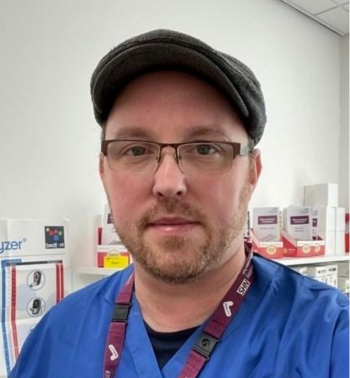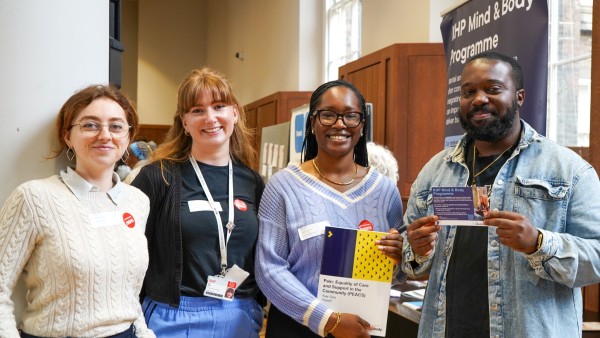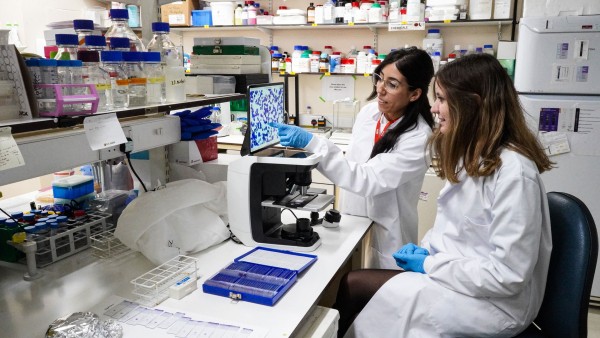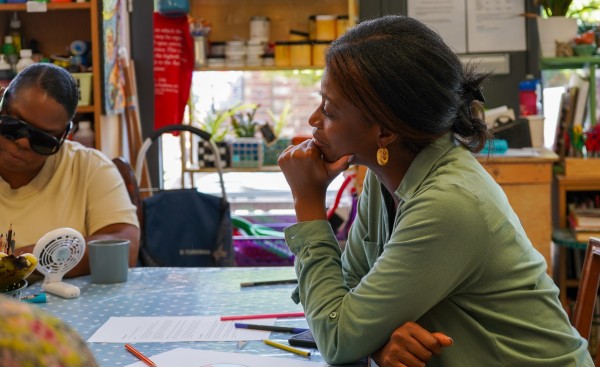23 May 2024
The UK may have seen its lowest proportion of cigarette smokers since records began (around 6.4 million adults or 12.9% of the UK adult population) but the government’s smoking and tobacco health guidance says people with mental health problems are almost 2.5 times as likely to smoke as the general population.
To reduce this figure, Krzysztof Junak [pictured], tobacco dependence advisor at South London and Maudsley NHS FT, is introducing a service to help address this health inequality. In an interview with KHP News he said:
“By supporting this population to quit we can help save 10-20 years of life for each patient. We need to fight until the end. A small number can be a massive result in someone’s life – that’s how I look at it.”
How is the partnership supporting people to quit smoking
Krzysztof Junak works with patients on the medium secure unit - River House, South London and Maudsley NHS FT. Patients of the unit have appointments with visiting GPs, chiropodists, opticians, dentists, and they receive diabetic eye screening and bowel cancer screening. Krzysztof saw these appointments as an opportunity to bring Smoking Cessation Clinics to the waiting rooms for patients who are waiting to attend physical health appointments.
“Smoking is not a lifestyle choice but a chronic medical condition, said Krzysztof. “It needs high-quality intervention and to be treated the same way as any mental or physical health condition. That’s why every contact matters.”
This year, King's College London researchers also conducted a study evaluating a smoking cessation service for patients admitted to King's College Hospital and St Thomas' Hospital. They uncovered new evidence to support the rolling out of similar tobacco dependency treatment services in other NHS hospitals. The study, published in BMC Medicine, assessed the uptake and impact of an adapted Ottawa Model for Smoking Cessation (OMSC).
How smoking cessation clinics work
This clinic provides informal face-to-face smoking cessation appointments with tobacco dependence advisors outside of their ward environment. By offering support outside of the wards, Krzysztof believes patients are more open to have conversations around quitting as opposed to when support is offered on the wards.
Patients who visit the clinic can receive advice and have carbon monoxide checks; it’s an opportunity to offer support without patients having to go anywhere to look for it. When a patient engages with the clinic before their physical health appointment, it is recorded so that the chance of a sustained attempt to quit smoking is improved. In 2023, 169 people at South London and Maudsley NHS FT accessed the smoking cessation waiting room clinic - a figure that includes staff and patients. The forecast for 2024 is to have 400 to 500 patient engagements.
Carbon monoxide checks provide a source of motivation
A breath test is a standard part of smoking cessation support for patients. The test shows the level of carbon monoxide – a poisonous gas in cigarette smoke – in a patient’s body.
“Patients love being able to see their progress. The carbon monoxide checks can give them that quitting mindset - it’s a great motivational tool.”
Reducing the smoking prevalence gap
In the long run the measure of success for this clinic won’t be an increase in patient engagements but rather a decrease which suggests that the clinic is achieving its ambition of helping people to quit for good. It may be too soon to gather this data but there are other ways for us to see the value of this initiative.
Krzysztof told us there has been a huge reduction in smoking on the wards because patients can manage their addiction in a safer way. As a consequence, there has also been a reduction in fires and violence related to smoking on the wards in River House.
In the middle of our interview, we saw the impact of the clinic first hand when Krzysztof was contacted by a patient who requested some vapes. Krzysztof said: “A patient just called me to ask if I can provide them with some vapes, I will make sure that patient gets those, that’s the whole idea!” He then went on to share how he has worked with patients who have quit both smoking and vaping. “It’s the ultimate aim for me,” he said. "If someone isn’t ready and needs time, I am happy to wait for them. People just need a chance to believe that they can achieve it.”
Uniting services to help people quit smoking
The smoking cessation waiting room clinic is an initiative that brings together tobacco dependence advisors and the physical health team for the benefits of patients. Krzysztof himself is an ex-smoker of 17 years, which has motivated him to help others to quit. Through his work he has inspired, not only patients, but colleagues too, many of whom he says now share his passion for smoking cessation.
As a call to action, he spoke about the need to improve awareness for staff so they can better support patients. Outside of the clinic he has also introduced at least one smoking cessation champion onto each ward in the unit and trained them, so they have better knowledge and capacity to assist.
“We all need to be more educated and understanding to make a bigger impact.”





